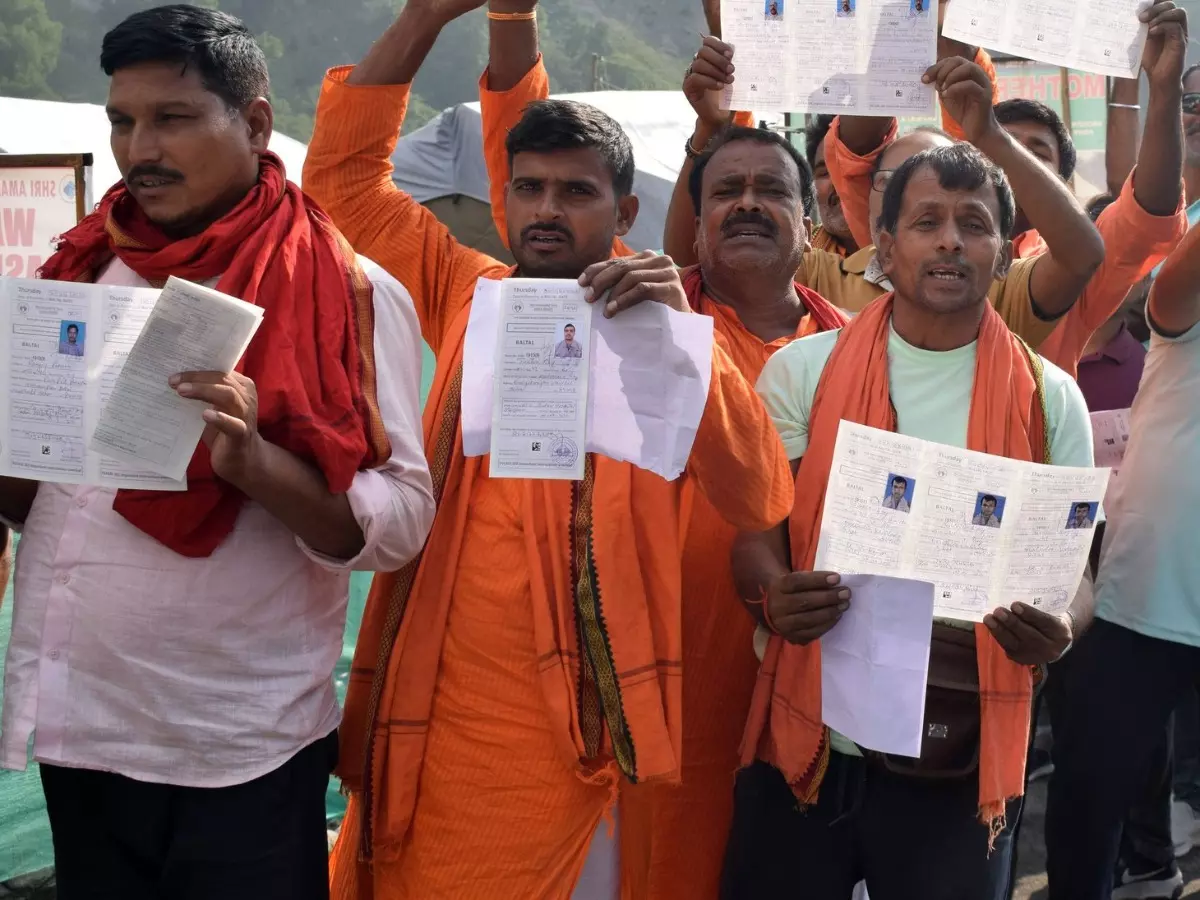Explained: Everything That Amarnath Yatra Pilgrims Need To Know
The annual Amarnath Yatra began on Thursday as batch of about 2750 pilgrims left the base camp for the cave shrine housing the naturally formed ice-lingam in the Himalayas of south Kashmirs Pahalgam town. The yatra has resumed after a three-year hiatus due to the abrogation of Article 370 and coronavirus pandemic. The 43-day pilgrimage will conclude on August 11 on the occasion of Raksha Bandhan.

The annual Amarnath Yatra began on Thursday as batch of about 2,750 pilgrims left the base camp for the cave shrine housing the naturally formed ice-lingam in the Himalayas of south Kashmir's Pahalgam town.
The yatra has resumed after a three-year hiatus due to the abrogation of Article 370 and coronavirus pandemic.
 Photo: Basit Zargar
Photo: Basit Zargar
The pilgrimage was flagged off by Deputy Commissioner (DC) Anantnag Piyush Singla at the Nunwan base camp. The journey-most of it on foot-takes about three days with night halts at Sheeshnag and Panchtarni along the route.
The J&K Lieutenant Governor Manoj Sinha on Wednesday flagged off the first batch of pilgrims for the annual Amarnath Yatra from the Yatri Niwas base camp at Bhagwati Nagar in the Jammu city for their onward journey to the Pahalgam and Baltal base camps in Kashmir.
The 43-day pilgrimage will conclude on August 11 on the occasion of Raksha Bandhan.
Aadhar card, RFID important
The Shri Amarnath Shrine Board has asked all devotees to carry an Aadhaar card or a biometric-verified document with them to ensure only bona fide pilgrims attend the pilgrimage.
Authorities have for the first time issued Radio Frequency Identification (RFID) tags to pilgrims so that their movements can be monitored for safety and security purposes.
 Photo: Basit Zargar
Photo: Basit Zargar
As per a statement by the Ministry of Home Affairs: ˇ°The Chief Secretary of Jammu and Kashmir said that for the first time, every Amarnath Yatri would be given a RFID card and would be insured for Rs 5 lakh. A tent city, WiFi hotspots and proper lighting will be arranged on the yatra's travel route.ˇ±
Things To Keep In Mind
Devotees must not take their fitness levels for granted. Therefore, they must mentally and physically prepare to brace for cold weather and the rugged landscape.
The pilgrims who have done their registrations and are planning to do the same, must do the morning or evening walk for nearly 4 to 5 hours daily. This is a necessity to keep oneself fit as one comes at a very high altitude. The holy cave is at 12,700 ft while you do have to cross 14,000 or 15,000 ft in your way. Also, practice deep breathing exercises as there are oxygen shortages at such high altitudes,ˇ± ANI quoted Principal Secretary to Jammu and Kashmir Lieutenant Governor Manoj Sinha, Nitishwar Kumar as saying.
 Photo: Basit Zargar
Photo: Basit Zargar
Pilgrims must not forget to make a checklist of essential items they would need during the yatra. For instance, pilgrims must carry warm clothes, basic medicines, food and water bottle, an umbrella and a walking stick.
Routes for Amarnath cave
The Amarnath cave is situated 3,888 metres above sea level and it can only be reached on foot or by pony. Located in the Himalayas, the cave shrine can be accessed through the Qazigund-Anantnag Pahalgam axis and the Qazigund-Anantnag-Pulwama-Srinagar-Ganderbal-Sonamarg-Baltal axis.
There are two routes to reach Amarnath. One is via Sonamarg and another is Pahalgam. Sonamarg one is 16 km trek from Baltal and takes 1-2 days. While as Pahalgam route, which is approximately 36-48 km and takes 3-5 days to cover.
Other facilities available
In addition, the board has made available the privilege of online 'darshan' to those who cannot travel to the holy place in person. ˇ°For the devotees who cannot come for the pilgrimage, they can avail the facility of online 'darshan', 'pooja', 'havan' and 'prasad',ˇ± said the official.
 Photo: Basit Zargar
Photo: Basit Zargar
A 70-bed DRDO hospital also has been set up at the Baltal base camp for pilgrims.
Heavy security arrangements have been put in place for a secure and smooth Amarnath Yatra this year. Mountains and hill peaks leading to the Amarnath cave from Pahalgam and Baltal route are covered by border security forces and the Indian Army have also set up temporary posts at different locations for the safety and security of devotees visiting the holy cave.
Also, UAVs (unmanned aerial vehicles) and deployment of over 80,000 security personnel have been put in place for surveillance of routes.
For more on news, sports and current affairs from around the world, please visit Indiatimes News.
